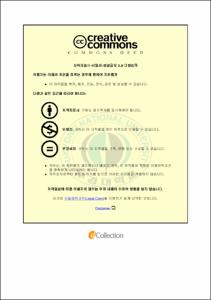H12MDI와 IPDI의 혼합비율에 따른 폴리우레탄 수지의 물성 연구
- Alternative Title
- A study on the physical properties of the polyurethane resin which it follows in H12MDI and IPDI mixture ratio
- Abstract
- Typically, polyurethane materials are classified into polyol, diisocyanate, chain extender, blocking agent, solvent and additive. More than anything else, properties of polyurethane depend on the types of diisocyanate to a great extent. Accordingly, it is important to select suitable types of diisocyanate for usage.
At present, as coating materials for nonferrous metals are weak in terms of processability, they are subject to pre-processing and post-coating. Also, for improvement of adhesion, coating materials undergo a range of production processes ranging from the first primer processing, intermediate coat to top coat. Thus, coating materials would save production cost significantly with simplified steps in production based on pre-coating, post-processing and 1-bake if they assume similar properties to the existing coating materials.
Hence, the present study performed a comparative experiment regarding the properties of H12MDI and IPDI, both of which diisocyanate are typically used for polyurethane resin, by injecting different ratios in polymerization of polyurethane (100:0, 75:25, 50:50, 25:75 and 0:100).
As the result, machinability improved, as IPDI's mixing ratio increased, and it showed thermal stability in the TGA test, corrosion property in the impedance test, shock resistance in the impact test, and good wear resistance and solvent resistance.
Whereas room temperature stability, hardness, stain resistance and alkali resistance improved in the IR and viscosity measurement test, as H12MDI's mixing ratio went up.
In particular, machinability displayed remarkably big differences. It is because H12MDI has a symmetrical structure to NCO groups and thus two NCOs have the same reactivity. Unlike H12MDI, IPDI has an asymmetrical structure to NCO groups.
Based on this molecular structure, polyurethane resin using H12MDI was hard and a serious crack occurred in it, when banding it in the machinability test. Also, it appears that IPDI didn't cause any crack in the machinability test, because it has an asymmetrical structure and polyurethane resin's structure is entangled to make it flexible.
- Issued Date
- 2013
- Awarded Date
- 2013. 2
- Type
- Dissertation
- Publisher
- 부경대학교 산업대학원
- Alternative Author(s)
- Lee, Jin Soo
- Affiliation
- 부경대학교 산업대학원
- Department
- 산업대학원 응용화학공학과
- Advisor
- 문명준
- Table Of Contents
- 제 1 장. 서론 1
제 2 장. 이론 3
2-1. 폴리우레탄이란 3
2-2. 폴리우레탄 수지 합성 5
2-2-1. 이소시아네이트와 폴리올의 반응 5
2-2-2. 혼합비(NCO/OH의 몰비 또는 당량비)에 따른 폴리우레탄의 종류 9
2-2-3. Soft, Hard-segment의 형성반응 11
제 3 장. 실험 13
3-1. 시약 13
3-2. 실험장치 및 기기 17
3-3. 폴리우레탄 수지 제조 18
3-3-1. NCO 정량 시험법 21
3-4. 시험편 제작 22
3-4-1. 코팅 시험편 제작 22
3-4-2. 코팅 필름 제작 22
3-5. 분석 방법 24
3-5-1. 점도 측정 방법 24
3-5-2. 경화속도 및 가교도 시험 방법 24
3-5-3. 광택 측정 방법 24
3-5-4. 기계적 물성 시험 방법 25
가. 인장 시험 25
나. 가공 시험 25
다. 충격 시험 25
라. 경도 시험 25
마. 접착력 시험 26
바. 내마모성 시험 26
사. 내오염성 시험 26
아. 내비등수성 시험 26
차. 내약품성 시험 26
카. 내용제성 시험 26
제 4 장. 결과 및 고찰 28
4-1. 적외선 분광 스펙트럼 분석 28
4-2. TGA에 의한 내열성 측정 29
4-3. 임피던스를 이용한 내식성 평가 30
4-4. 도료 점성도 측정 31
4-5. 경화속도 및 가교도 시험 32
4-6. 광택 측정 시험 34
4-7. 기계적 물성 시험 결과 35
4-7-1. 인장 시험에 따른 신장성 변화 35
4-7-2. 가공 시험에 따른 굴곡성 변화 35
4-7-3. Impact 시험에 따른 충격성 변화 39
4-7-4. 경도 시험 41
4-7-5. 접착력 시험 43
4-7-6. 내마모성 시험 45
4-7-7. 내오염성 시험 47
4-7-8. 내비등수성 시험 49
4-7-9. 내약품성 시험 50
4-7-10. 내용제성 시험 54
제 5 장. 결론 55
참고문헌 57
- Degree
- Master
- Files in This Item:
-
-
Download
 H12MDI와 IPDI의 혼합비율에 따른 폴리우레탄 수지의 물성 연구.pdf
기타 데이터 / 2.56 MB / Adobe PDF
H12MDI와 IPDI의 혼합비율에 따른 폴리우레탄 수지의 물성 연구.pdf
기타 데이터 / 2.56 MB / Adobe PDF
-
Items in Repository are protected by copyright, with all rights reserved, unless otherwise indicated.